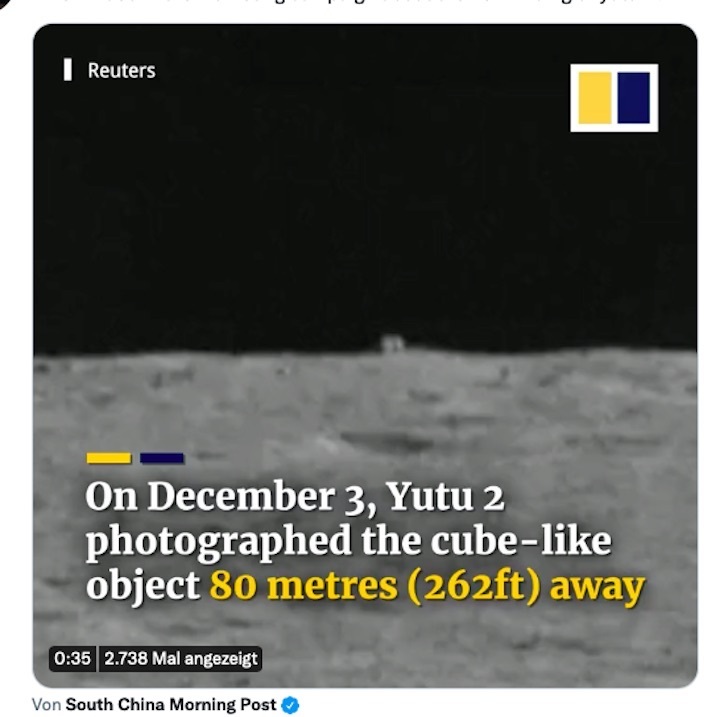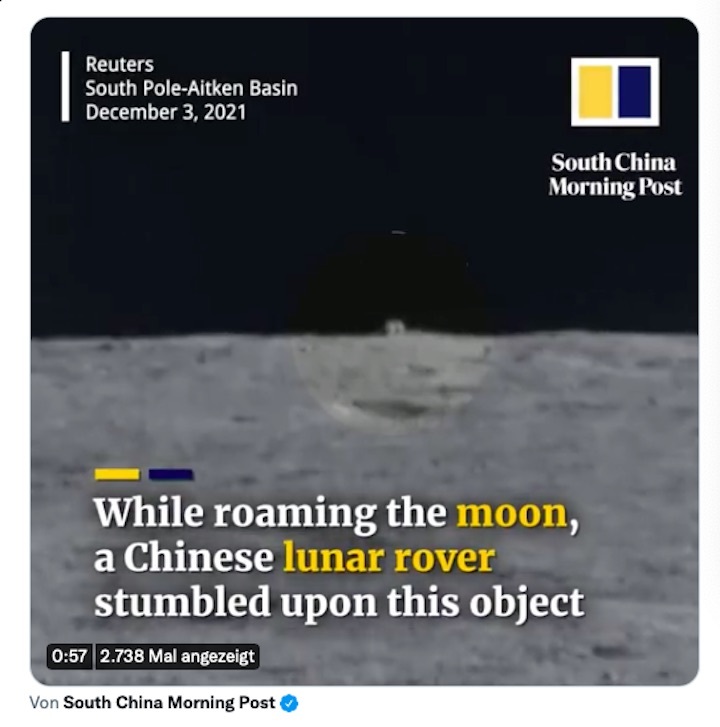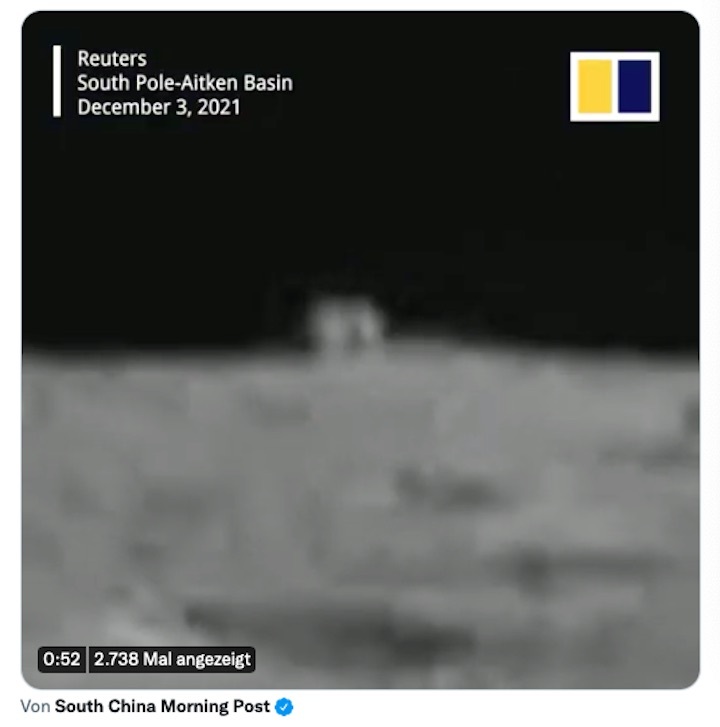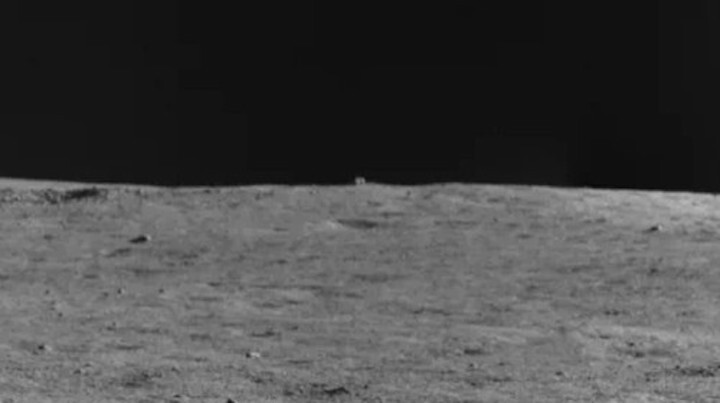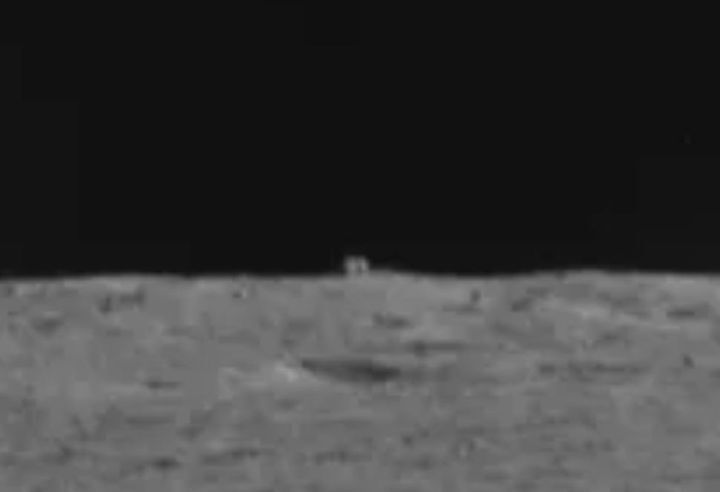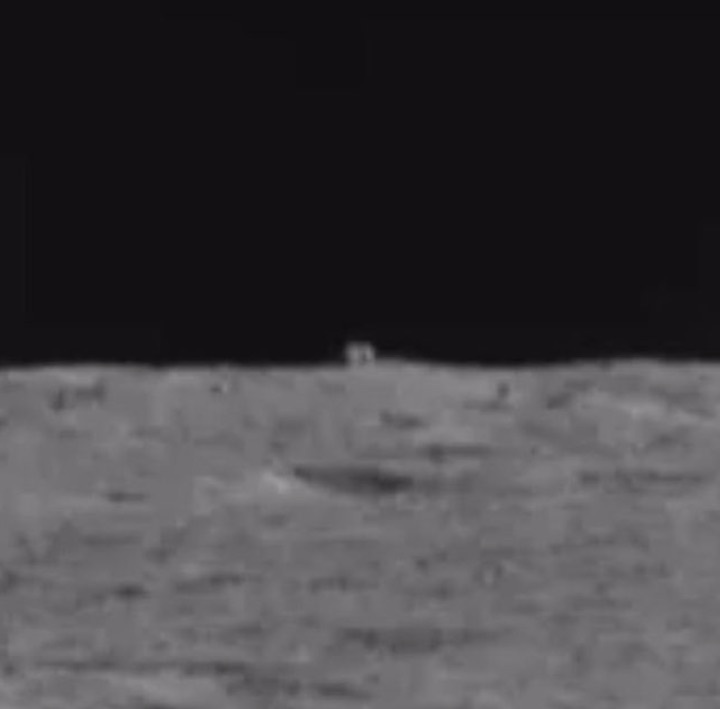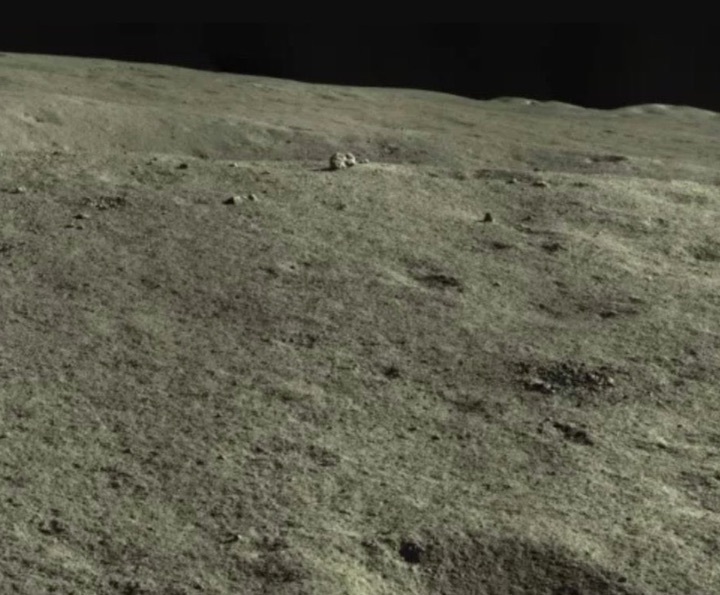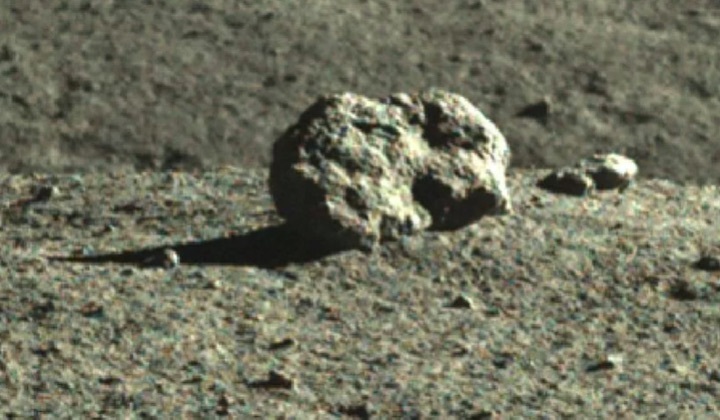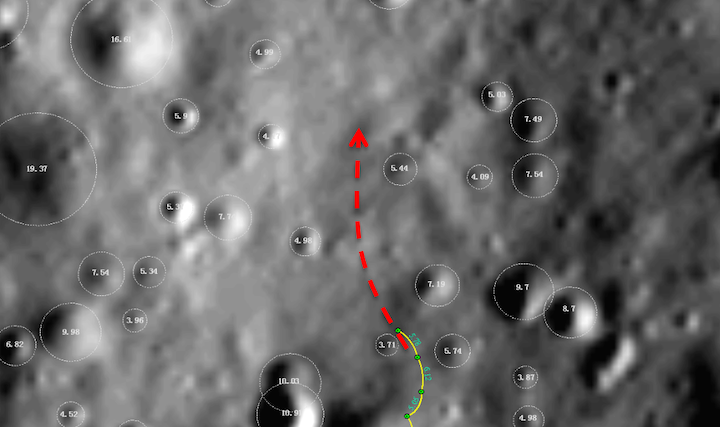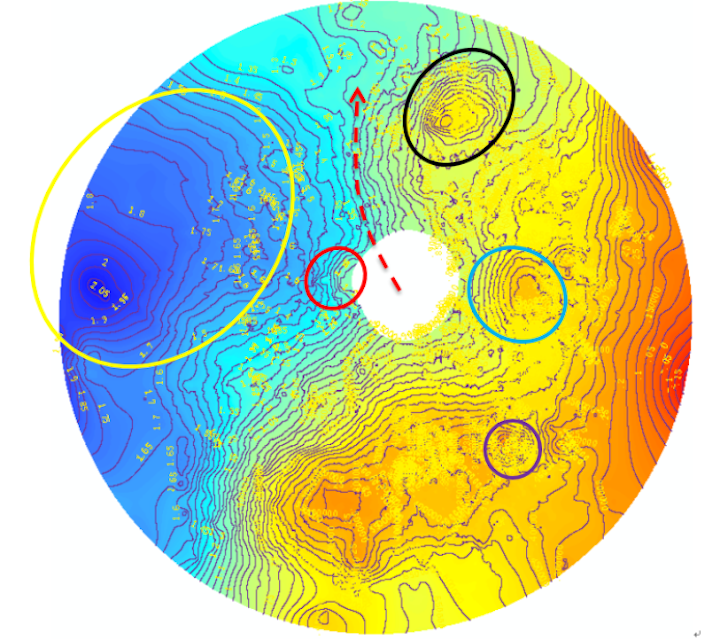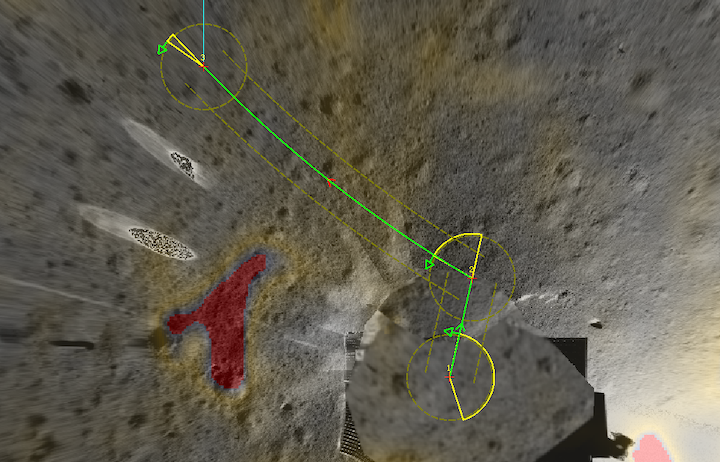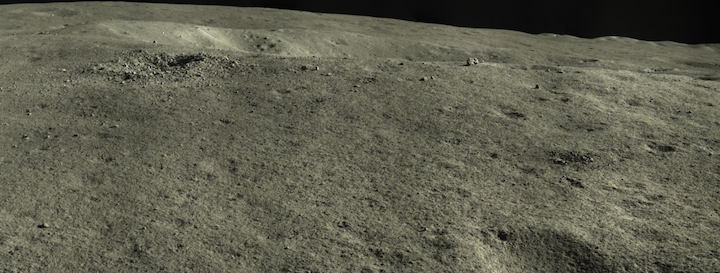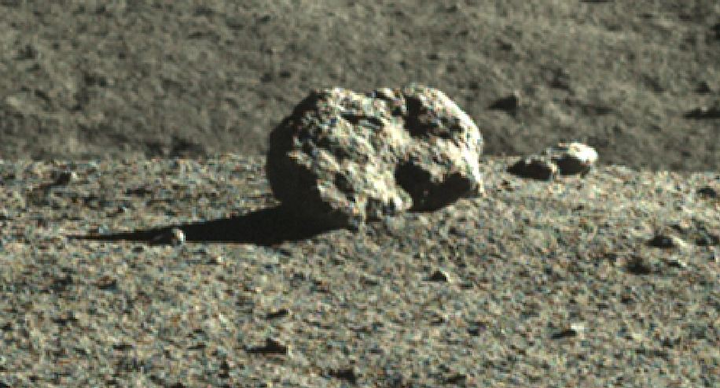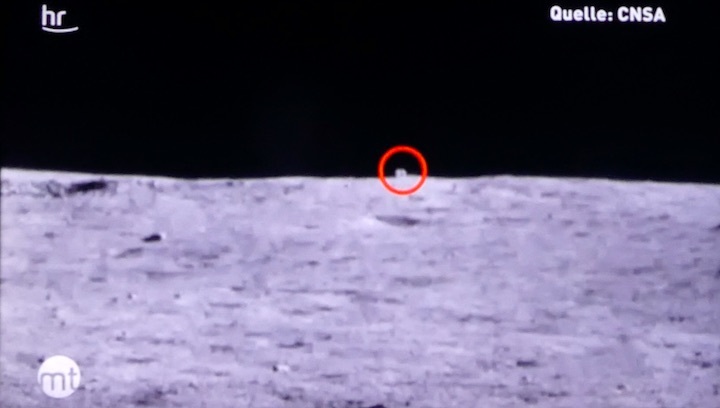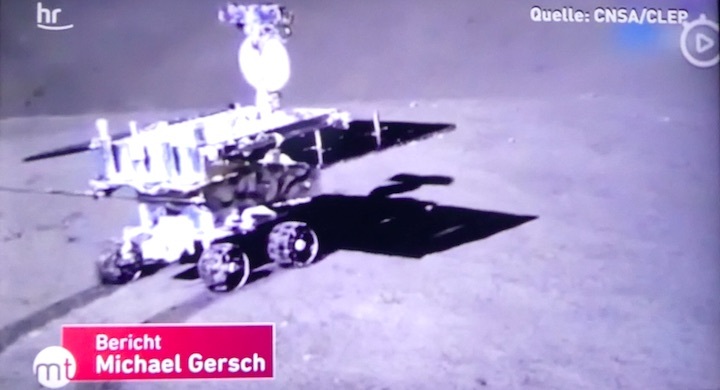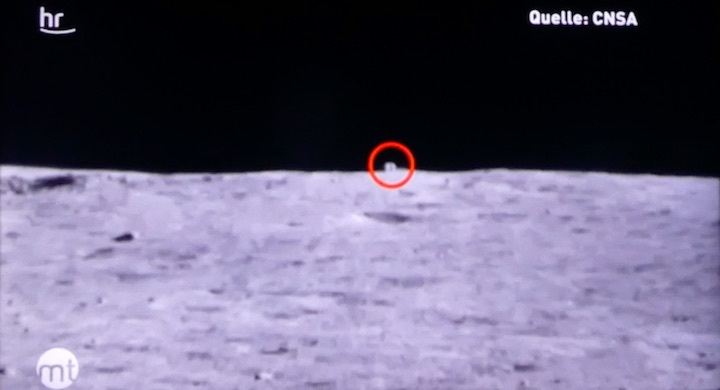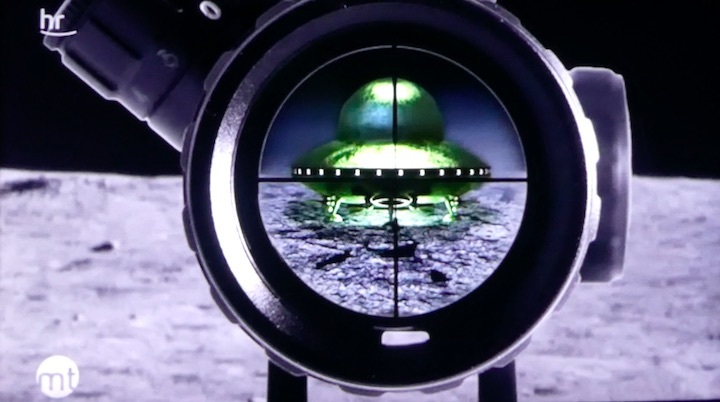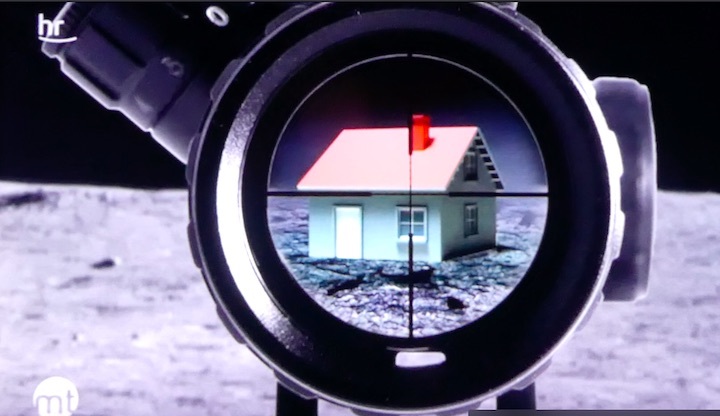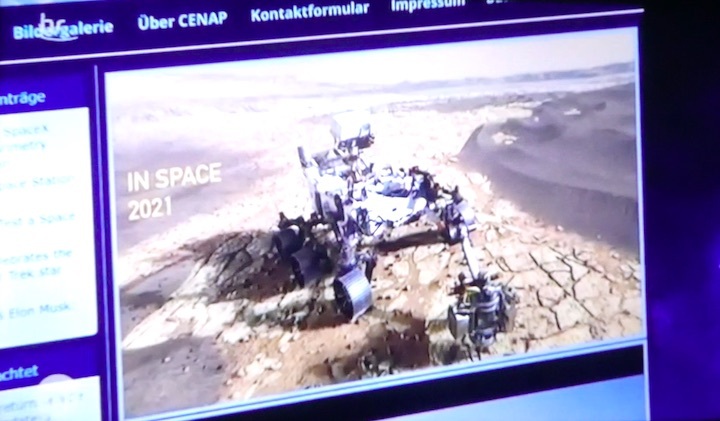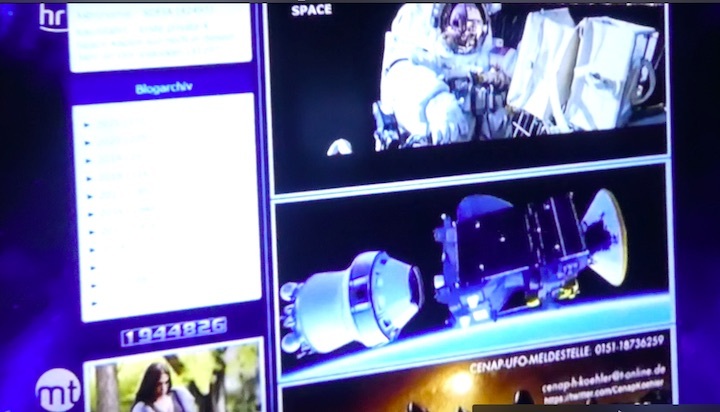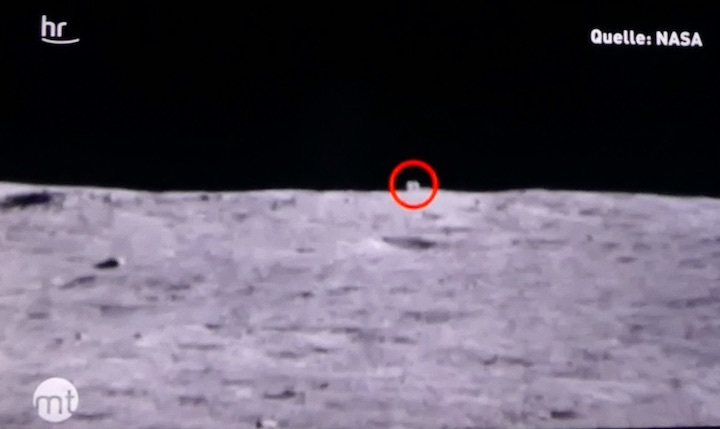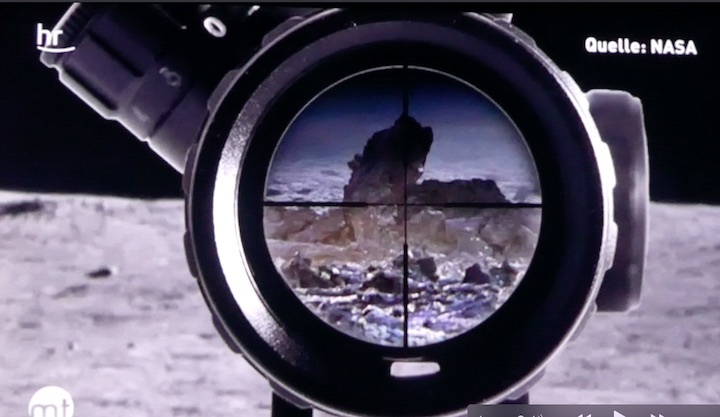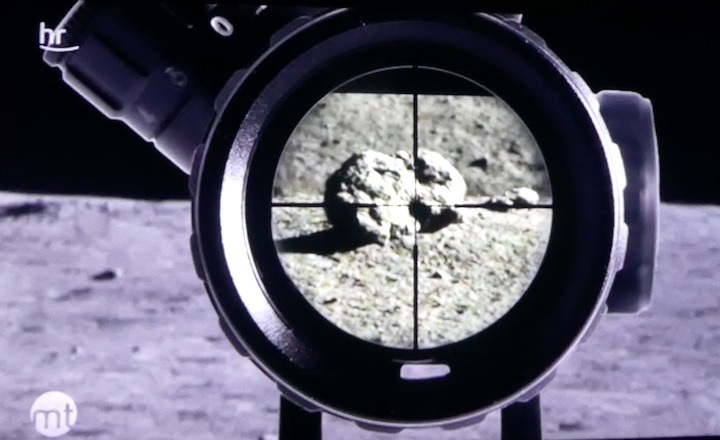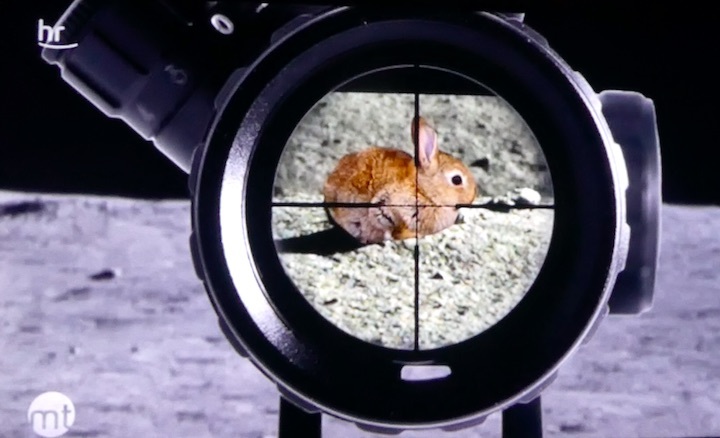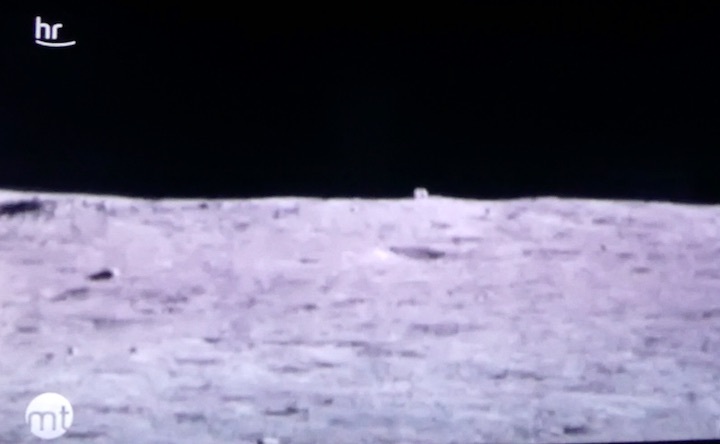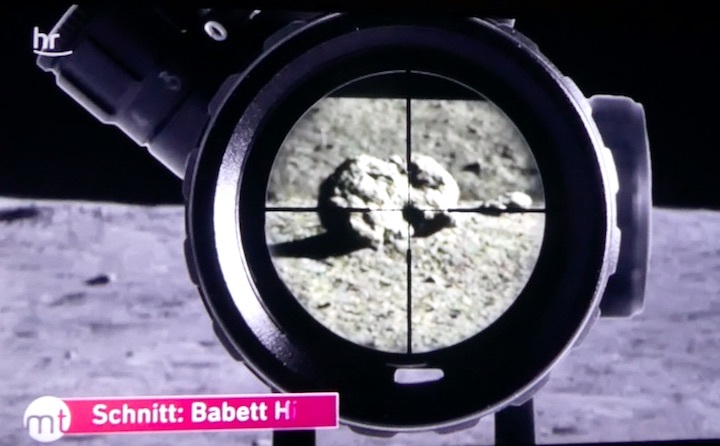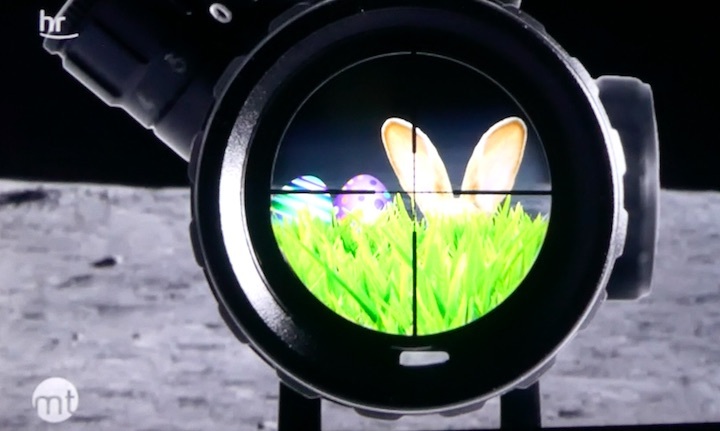A mysterious “moon cube” spotted by a Chinese rover on the far side of the moon has dazzled the internet. And it could take months for the rover to find out what the weird-looking object really is.
The Chinese lunar rover has captured an image of a cube-shaped object on the horizon about 80 meters (about 262 feet) away from its location, said Our Space, a state-run science outlet, which called it a “mysterious hut” in the rover’s latest travel log on Dec. 3. The post has inspired all kinds of speculation and memes, with social media users calling it an alien home, an outdoor toilet, and a COVID-19 testing station.
Although the cube is likely just some rocks, the travel log said it would take two to three lunar days, or two to three months on Earth, for the rover to take a close look at it.
So why does it take so long?
Yutu-2, or “Jade Rabbit-2,” became the first rover to land on the far side of the moon (the hemisphere that faces away from Earth) in 2019. Like many other space rovers, it moves very slowly under stringent control by scientists on Earth.
First, the rover spent more than half of its lifetime dormant. The temperature during the lunar night, which lasts about 14 Earth days, could dip to -292 degrees Fahrenheit (-180 degrees Celsius), making it too cold for the robot to operate. The device also needs to “take naps” when it becomes too hot.
ROUTE OF THE YUTU-2 ROVER IN ITS FIRST 35 LUNAR DAYS. PHOTO: OUR SPACE
The wheeled robot has a designed maximum speed of 200 meters per hour, or 5.6 centimeters per second or 0.12 miles per hour. But in reality, it does not just stride straight ahead at full speed. According to the travel logs published by Our Space, engineers have been making careful calculations for every step the rover takes.
They need to help the rover avoid the ubiquitous small craters on the lunar surface, make sure it does not slide down a slope, and guide it toward an ideal resting spot before night falls. The rover also needs to make occasional stops to conduct scientific research.
Space engineers refer to images of the lunar surface taken by a satellite probe to map out the rover’s long-term routes, while pictures captured by the rover’s own cameras are used to design the rover’s short-term movements.
Engineers build 3D models with the pictures, and work out the rover’s next steps based on the geological features of a particular location as well as the robot’s communications and energy conditions, according to Our Spacetravel logs.
Before the rover sets out, its moves are first rehearsed on the computer. Following every step, engineers would analyze data from the new location to make sure it is on the right track. The mechanism is aimed at protecting the rover from any accidents that could stop it from functioning.
Because of the complicated navigation process, the rover has not traveled too far since it arrived in the Von Karman Crater in the South Pole-Aitken Basin in January 2019. By the end of September, when the rover reached the milestone of 1,000 days of operation, it had made 170 moves and covered a distance of 839 meters (2,752 feet), according to Our Space.
In short, Yutu-2 moves very, very slowly but surely.
Rovers equipped with self-driving systems are able to move faster. China’s Zhurong Mars rover, which is able to identify obstacles by itself, has traveled 1,000 meters within 100 martian days (103 Earth days), the government said.
An enhanced auto-navigation system on NASA’s Perseverance Mars rover could enable it to move at 393 feet (120 meters) per hour. In comparison, the Opportunity Mars rover traveled 28 miles in its 14 years’ lifespan, or an average of about 880 feet per month.
Quelle: VICE
+++
LOOK: CHINESE ROVER SPOTS A "MOON CUBE," AND OPENS A NEW LUNAR MYSTERY
While almost certainly a boulder or two, the enigmatic Moon Cube is nevertheless fascinating, and could help scientist understand how to live on the Moon.
AN IMAGE HAS TANTALIZED the internet: an enigmatic cube-shaped object on the far side of the Moon.
But “strange cube” conjures up a few images: an alien Starbucks. A secret Russian Moonbase. Gene Ray’s Time Cube instantiated. A time-traveling porta-pot from a 1932 skyscraper construction site.
In November, the Chinese lunar rover Yutu-2 spotted the cube in the distance from the far side of the Moon. The rover has since been making its way toward the mysterious object, investigating its origins. And unfortunately for the overly imaginative, it’s unlikely to be aliens or something metaphysical.
As Paul Byrne, a professor in Earth and Planetary Sciences at Washington University in St. Louis, sees it, he knows exactly what it is: the more mundane confluence of rocks, light, and shadow.
“The object in that image is almost definitely, categorically, absolutely a boulder,” Byrne tells Inverse. “There's pretty much nothing else I can think it might be — my potential lack of imagination notwithstanding.”
It may not fire the imagination like an alien origin, but the boulder will help scientists better understand the history and composition of the Moon, and provide a picture of what could form other strange outcroppings on the surface of our nearest neighbor. Byrne says that better understanding the Moon could help astronauts better learn how to better “live off the land” and utilize lunar resources as part of lunar outposts.
The Moon cubes cometh — but we’ll be building them ourselves.
WHAT IS THE MYSTERIOUS MOON CUBE?
China’s robotic Yutu-2 lunar rover spotted a remarkably square-looking gray object on the horizon on its 36th lunar day, according to reporting by Space.com, which translated an entry in a rover mission diary from the Chinese language website Our Space.
Taken from around 260 feet away, the “mystery hut,” or “mystery house,” as Our Space put it, appears like a tiny cube the same color as the lunar regolith, but with a black rectangle in the center. Almost like a door … or a Kubrick-esque monolith.
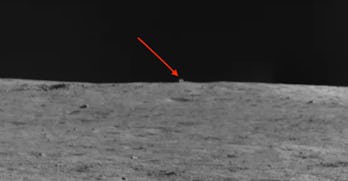
Zoom on the picture, and it becomes significantly blurry, but the overall impression of something with disconcertingly square proportions remains.
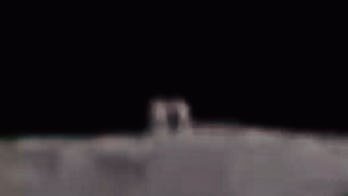
But while human craftsmanship tends to result in square angles and straight lines, not all square angles and straight lines result from human, or alien, handiwork. Byrne guides Inverse through a few scenarios:
- It could be an illusion: “Why might it appear square or cubic? First, the image looks to have a pretty low resolution of features at or beyond the horizon, so it might not actually be square,” Byrne says.
- It might have just been forged that way by natural causes: Even if it is square, “lots of boulders are blocky, squarish, or cubic/cuboidal because rocks commonly develop fracture sets that result in blocks,” Byrne says, and there are lots of boulders on the Moon.
- The most likely outcome is that as the rover gets closer to the object, it will become apparent that it’s a boulder or multiple boulders that only appear square due to light, shadow, and distance. And really, that would make it one of the more minor instances of extraplanetary pareidolia, that is, seeing patterns that don’t exist.

In 1976, the Viking 1 orbiter took a photo of a rock in the Cydonia region of Mars that looked an awful lot like a face. Humans are neurologically primed to see faces, reading faces being pretty crucial for human survival, so it’s not surprising some people would see a face somewhere on Mars. It was still just rocks, light, and shadow.
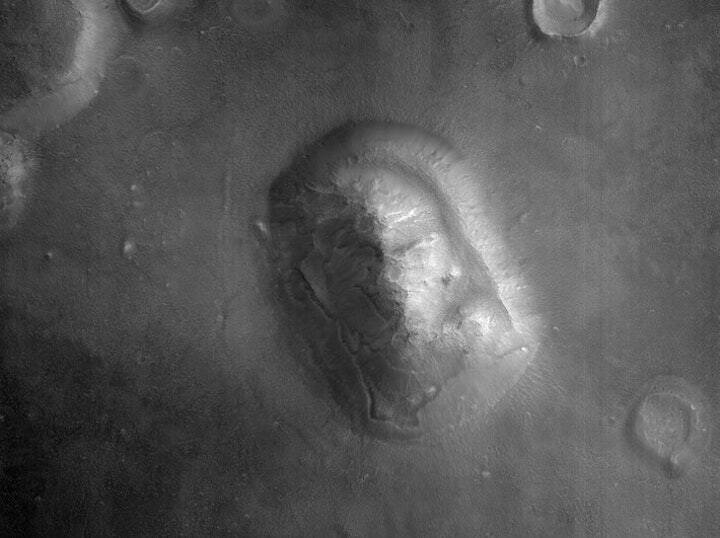
“The ‘Face on Mars’ is a perfect example of pareidolia,” Byrne says, but there are other examples, including what some people say looks like Han Solo encased in carbonite on Mercury or a giant tick on Venus.
WHERE IS THE MOON CUBE?
Whatever the Moon cube might be, it’s currently about a football field away from the Yutu-2 rover, which is the first rover to explore the far side of the Moon. Both the rover and the mysterious object sit in the Von Kármán crater, a 110-mile diameter impact crater in the southern polar region of the Moon.
Meteor or comet impacts are a good way to generate and disperse boulders on the Moon without weather or water, and the Moon cube and Yutu-2 sit in a double crater — the Von Kármán crater is one of many in much, much larger South Pole-Aitken Basin, which measures nearly 1,600 miles across.
WHAT IS THE CHINESE YUTU-2 ROVER?
CNSA launched the Yutu-2 rover in December 2018 as part of China’s Chang’e 4 lunar mission. The Chang’e 4 lander made the first soft landing on the Moon’s dark side on January 3, 2019, and deployed the rover.
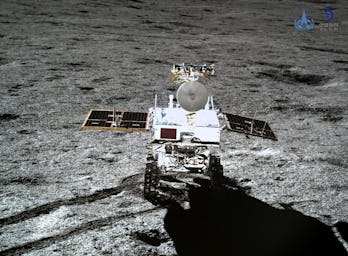
Yutu-2 has since traversed more than 2,700 feet of the lunar surface, using its ground-penetrating radar and spectrograph instruments to study the surface composition and deeper structure of the Moon.
Powered by solar panels, Yutu-2 powers down during the two-week-long lunar night when the dark side of the Moon faces away from the Sun. But the Chinese rover has nevertheless beat the longevity record of the Soviet Lunokhod 1 rover. The Soviet machine roved the Moon for 321 Earth days in 1971, but Yutu-2 has been going strong for more than 1,068 Earth days.
WHAT DOES THE MOON CUBE TELL US ABOUT LUNAR GEOLOGY?
Lunar boulders are interesting, Byrne says, because they tell scientists about the energies involved in the impacts that created them and give scientists access to material from deeper inside the Moon. “But for the time being, I have no reason to think that this particular boulder is any more special than any other of the billions and billions on the Moon,” he adds.
More exciting is what the Yutu-2 rover may learn on its way to examining this mystery object.
“We still have a lot to learn about the Moon scientifically: its interior structure, the level of geological activity there today, and the composition of a variety of different parts of the Moon,” Byrne says. “Anything we learn about a place we’ve only visited with humans a handful of times will be useful!”
HOW SOON WILL WE LEARN WHAT THE MYSTERIOUS MOON CUBE REALLY IS?
Yutu-2 is an impressive instrument, but it’s not built for speed. While Chinese scientists plan to investigate the Moon Cube/ “Mystery Hut,” it will likely take two to three months — with intervening periods of inactivity during the lunar night — for the rover to get to the site of the mystery.
Quelle: INVERSE
----
Update: 16.12.2021
.

